Comprehensive Gum Disease Treatment in Wishart for Healthier Gums
Restore Your Gum Health Today with Targeted Gum Disease Treatment
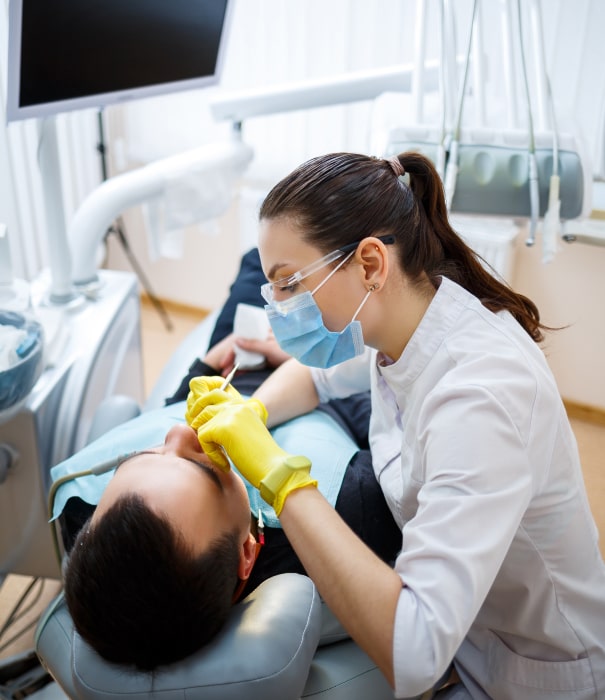
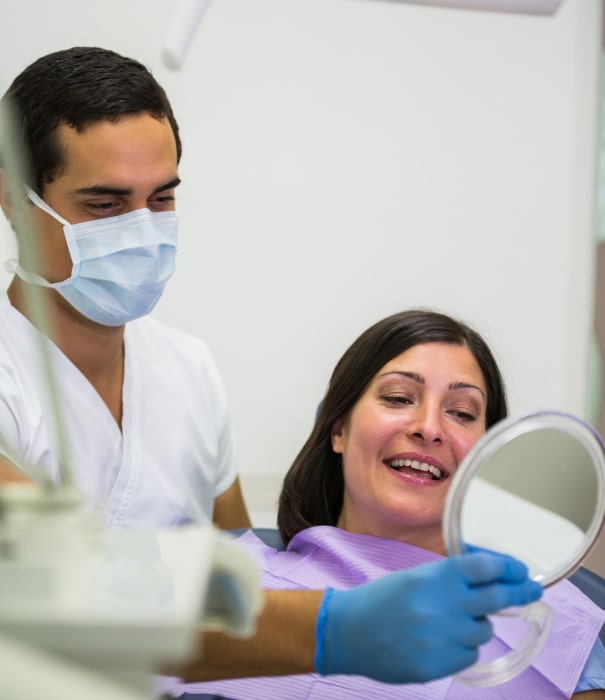
The Benefits of Gum Disease Treatment on Your Smile
Receiving gum disease treatment offers numerous benefits, from enhancing your smile’s appearance to supporting long-term oral health. Here are some key treatment benefits that gum disease procedures provide to improve your overall well-being.
- Treatment reduces gum inflammation, helping your gums appear healthier and feel more comfortable in everyday activities like eating and speaking.
- Regular care prevents tooth loss by strengthening the gums and supporting structures around each tooth for lasting stability.
- Gum disease treatment removes harmful bacteria, promoting fresher breath and a cleaner, healthier mouth.
- Addressing gum health lowers the risk of complications affecting other parts of the body.
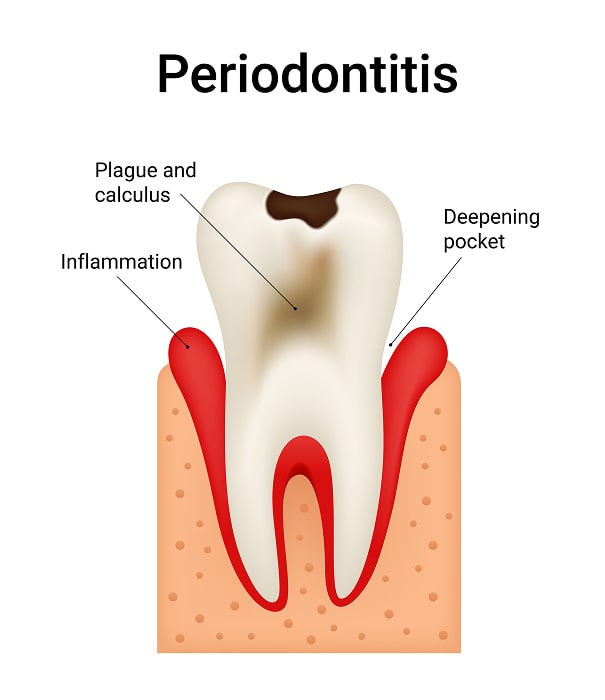
Check if You're a Candidate for Gum Disease Treatment
If you’ve noticed changes in your gums or oral comfort, you may benefit from a gum health assessment. Identifying early signs and risk factors can help determine whether treatment is appropriate. The following may indicate someone is a candidate for gum disease treatment:
- Patients with persistent gum redness, swelling, or tenderness may need professional care to address underlying inflammation.
- Anyone experiencing bleeding during brushing or flossing could be seeing an early sign of gum disease.
- Someone noticing receding gums, which expose sensitive areas, may be at risk of gum health issues.
- Patients with bad breath or a bad taste in the mouth often signal bacterial buildup.
- Someone with loose teeth suggests advanced gum disease affecting bone support.
Book a Gum Disease Assessment with Our Wishart Dental Team

Why Choose Southside Friendly Dental Care for Gum Disease Treatment in Wishart
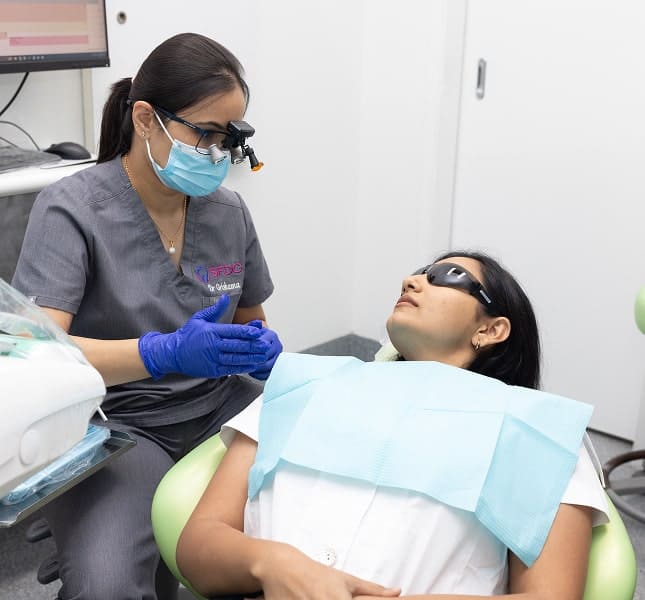
Patient Comfort
Your comfort matters to us, which is why we prioritise a relaxed and stress-free experience every time.
Personalised Gum Disease Treatment for Long-Term Oral Health
At Southside Friendly Dental Care, we take a tailored approach to managing gum disease at every stage of progression. Based in Wishart, our team uses evidence-based methods and modern diagnostic tools for accurate assessments. We focus on prevention, education, and consistency to support better outcomes over the long term.

Experienced Dentists
You’ll receive focused, personalised care from experienced dentists who understand the progression and impact of gum disease.
Skilled Dental Team Experienced in Periodontal Care
With focused experience in periodontal care, our team at Southside Friendly Dental Care supports patients across all stages of gum disease. Based in Wishart, we follow clinically recognised protocols tailored to your condition. Our approach combines technical knowledge with practical advice to support ongoing oral care.
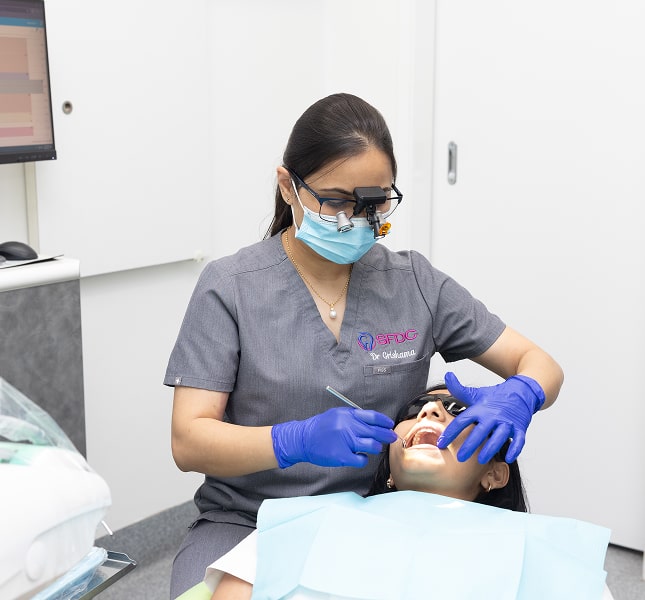
Advanced Dental Tools
Detailed imaging with modern dental technology supports our personalised approach to managing gum disease effectively.
Modern Technology for Precise Gum Disease Diagnosis and Treatment
With access to CBCT and OPG imaging, Southside Friendly Dental Care in Wishart provides accurate and detailed assessments for gum disease. These advanced tools allow us to examine bone levels and surrounding structures thoroughly. The information gathered supports targeted planning and helps guide an appropriate course of care.
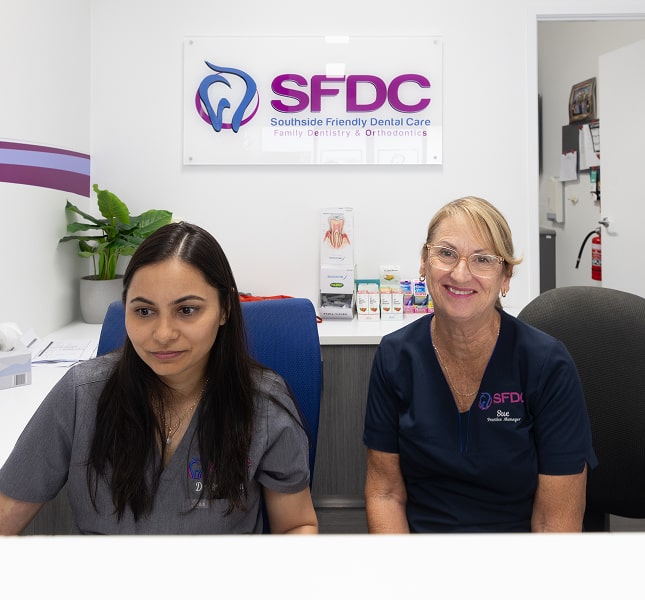
Affordable Care
Our clinic offers payment flexibility to support affordable, ongoing care for gum disease management across different stages and individual needs.
Flexible Payment Options for Periodontal Treatment in Wishart
Addressing gum disease can require staged care, and we offer flexible payment options to support your treatment plan. Southside Friendly Dental Care in Wishart works with patients to arrange manageable payment terms. This reflects our commitment to making essential periodontal care more accessible for individuals and families in our community.
Patient Experiences That Reflect Our Dedication to Quality
Monnapa
Tracey
Aks
Lily
Rothymn
Katherine
Pratik
The Wan The Naw
Richard
Vrisha
Jan
William
Monnapa
Tracey
Aks
Lily
Rothymn
Katherine
Pratik
The Wan The Naw
Richard
Vrisha
Jan
William
FAQs About Gum Disease Treatment
What causes gum disease?
Gum disease is primarily caused by the buildup of plaque—a sticky film of bacteria that forms on teeth. When plaque is not removed through daily brushing and flossing, it can harden into tartar, which irritates the gums and leads to inflammation. Over time, this can result in gum disease if not professionally managed.
While plaque and tartar are the main causes, several risk factors can increase the likelihood or severity of gum disease:
- Smoking:
Tobacco use weakens the body’s immune response, making it more difficult to manage gum infections. - Hormonal changes:
Fluctuations during puberty, pregnancy, and menopause can make the gums more sensitive and reactive to plaque. - Medications:
Certain medications reduce saliva flow, contributing to dry mouth, which increases the risk of bacterial buildup along the gumline. - Genetics:
A family history of gum disease may increase susceptibility, even in individuals who maintain regular oral hygiene habits.
How does gum disease develop?
Gum disease, or periodontal disease, is a progressive condition that develops in stages. Below are some key factors that contribute to it:
- Plaque Formation:
Plaque is a sticky film of bacteria that naturally forms on teeth and along the gumline. Inconsistent brushing and flossing allow plaque to accumulate. If not removed daily, it hardens into tartar (calculus), which requires professional cleaning to remove. - Tartar and Gingivitis:
Tartar buildup can irritate the gums, leading to inflammation known as gingivitis—the earliest stage of gum disease. Common signs include red, swollen gums and bleeding during brushing or flossing. At this stage, gum disease is often manageable with professional dental care and improved oral hygiene. - Periodontitis:
Periodontitis is the more advanced stage, where inflammation spreads below the gumline. This can lead to the breakdown of the bone and connective tissue that support the teeth. If not managed, it may result in tooth mobility or even tooth loss.
What can I do to prevent gum disease from developing or getting worse?
Maintaining healthy gums involves daily care and regular check-ups. Here are some key steps to help prevent gum disease or reduce its progression:
- Brush your teeth twice daily using fluoride toothpaste.
- Floss once a day to remove plaque from between the teeth and along the gumline.
- Attend regular dental check-ups and professional cleans to monitor and maintain gum health.
- Avoid tobacco products, which can increase the risk of gum disease.
- Manage underlying health conditions, such as diabetes, that may affect gum health.
- Pay attention to changes in your gums, including bleeding, tenderness, or swelling.
Early attention to these habits can make a significant difference in preserving your long-term oral well-being.
What are the early signs of gum disease?
Gum disease often starts quietly. Therefore, it is important to recognise the early signs of gum disease and address it before it progresses. Some common early indicators include:
- Red or Swollen Gums:
Healthy gums should appear firm and pink. If you notice redness or swelling, it could be one of the first signs of gum disease. - Bleeding Gums:
If your gums bleed when you brush or floss, this may also be an early sign of gum disease. - Persistent Bad Breath:
Chronic bad breath, or a bad taste in your mouth, can be linked to gum disease due to bacteria buildup. - Gum Sensitivity or Tenderness:
Gums that feel tender or sore when touched are often a sign of irritation. - Receding Gums:
If your gums start pulling away from your teeth, they may create gaps. This may indicate the advancement of severe gum disease.
If you notice any of these signs of gum disease, you should consult a dental professional. At Southside Friendly Dental Care, we provide gum health assessments for patients in Wishart and the surrounding suburbs. Our team offers gentle, evidence-based treatment tailored to your needs.
What does the minor stage of gingivitis look like?
Mild or early-stage gingivitis can be difficult to notice, but subtle visual changes in your gums may signal inflammation. Common signs include:
- Redness along the Gumline:
Healthy gums are usually light pink, but in the early stages of gingivitis, the gumline may appear slightly red. - Mild Swelling:
Gums in the minor stage of gingivitis may appear a bit puffier or fuller than usual. The swelling may not be immediately noticeable. - Shiny or Glossy Gum Surface:
Early gingivitis can give the gums a slightly glossy appearance, which differs from the natural matte look of healthy gums. - Light Bleeding:
While not always visible, brushing or flossing can sometimes reveal slight bleeding, indicating inflammation under the surface.
Recognising these indicators is an important part of gum disease prevention. Consider a gum health check-up to assess your symptoms and receive personalised care to help manage early gum disease.
Is gum disease reversible?
Gum disease may be reversible in its early stage, known as gingivitis. At this point, the gums can appear red, swollen, or bleed during brushing or flossing. However, the bone and connective tissues have not yet been affected. Improved oral hygiene and professional cleaning can often help restore gum health.
If it progresses to periodontitis, the condition may no longer be reversible, as it can involve damage to the structures that support the teeth. However, ongoing periodontitis care and regular maintenance can help slow its progression and stabilise the condition.
Can gum disease go away by itself?
Gum disease doesn’t improve without intervention. While early-stage gum disease (gingivitis) may be reversible with consistent brushing, flossing, and professional cleanings, more advanced stages require dental treatment. If not addressed, gingivitis can progress into periodontitis, which may lead to gum recession, bone loss, and even tooth loss.
Plaque hardens into tartar over time and cannot be removed with regular brushing. Only a dental professional can clean tartar effectively and help manage gum disease.
Early diagnosis is key. If you’re noticing signs like bleeding gums or bad breath, it’s important to book a dental check-up. At Southside Friendly Dental Care in Wishart, we provide gum assessments to help catch and manage early-stage gum disease.
Does salt water help gum disease?
Warm salt water can help soothe minor gum irritation and may temporarily reduce oral bacteria. It’s often recommended for easing discomfort from early-stage gum inflammation, such as gingivitis. However, salt water alone does not remove plaque or tartar—the primary cause of gum disease.
To effectively manage or prevent gum disease, professional dental cleanings and check-ups are essential. Rinsing with salt water can be used as a supportive part of your oral hygiene routine, but it should not replace professional care.
What does a dentist do for gum disease?
To manage gum disease, a dental professional follows a series of targeted approaches based on how advanced the condition is. The goal is to remove bacteria, reduce inflammation, and prevent further damage. Treatment may include:
- Phase 1: Professional Cleaning (Scaling)
For early-stage gum disease (gingivitis), the dentist performs a professional cleaning (scaling). This removes plaque and tartar above the gumline to reduce irritation and support healing. - Phase 2: Deep Cleaning (Scaling and Root Planing)
If gum disease has progressed to periodontitis, deep cleaning is often needed. This involves cleaning beneath the gumline and smoothing the tooth roots to help gums reattach and reduce pocket depth. - Phase 3: Advanced Care for Severe Cases
In severe cases, gum disease may impact the structures supporting the teeth. The dentist might refer the patient for advanced treatment to address bone or tissue loss, including periodontal surgery and bone and tissue grafts.
Regular check-ups and cleanings are essential for gum disease prevention and for addressing any early signs of gum health concerns. At Southside Friendly Dental Care, our friendly staff offers personalised gum disease treatment options tailored to each patient’s needs. We welcome everyone from Wishart and surrounding suburbs, including Mansfield, Mount Gravatt, Eight Mile Plains, and Upper Mount Gravatt. From early detection to ongoing support, we’re here to help you protect and care for your gums at every stage.
What should I expect during my gum disease treatment consultation?
During your gum disease consultation, you can expect a thorough assessment and a clear path forward for your gum health. Here’s what generally happens:
- Initial Discussion:
The dentist will review your dental history and discuss any symptoms, such as bleeding or sensitivity. - Comprehensive Examination:
The dentist will perform a detailed examination of your teeth and gums, looking for signs of gum disease. This includes assessing the condition of your gum tissue and checking for any visible plaque or tartar buildup. - Gum Pocket Measurement:
Using a specialised tool, the dentist will measure the depth of the pockets between your gums and teeth. This measurement helps gauge the severity of the gum disease and helps formulate a detailed treatment plan. - Customised Treatment Plan:
Based on the findings, you’ll receive a tailored treatment strategy—this may include professional cleaning or lifestyle changes. - Education on Care Practices:
You’ll be advised on home care practices to support healing and prevent recurrence. - Questions and Concerns:
Finally, there will be time for you to ask any questions about your condition or the recommended treatment plan. This discussion will make you feel confident and informed about your gum health journey.
At Southside Friendly Dental Care, our dedicated team is committed to making your consultation as informative and supportive as possible. We’ll help you understand every aspect of your gum disease management and provide a clear plan to improve your gum health.
How long does gum disease take to heal?
Healing time for gum disease depends on the severity of the condition and the treatment approach used. For early-stage gum disease (gingivitis), improvement may be seen within a few days to a week after professional cleaning and improved oral hygiene. Symptoms like gum inflammation and bleeding often begin to ease during this period.
In contrast, the healing process usually requires more time for more advanced gum disease (periodontitis). Treatment often involves deeper cleaning procedures, like scaling and root planing, which may necessitate multiple visits. Healing can take several weeks to a few months, depending on your personalised treatment plan.
Factors like overall health, oral hygiene habits, smoking, and diet can all influence recovery time. Following your dentist’s recommendations and attending regular check-ups are essential for effective healing and long-term gum health.
What happens if gum disease is ignored for too long?
If gum disease is ignored for an extended period, it can result in significant dental health complications. What may seem like mild symptoms can escalate into more severe conditions, including:
- Severe Infection:
Gum disease, if not addressed, can result in a more extensive bacterial infection. This condition may lead to a systemic inflammatory response affecting other areas of the body. - Bone Loss:
The infection can deteriorate the jawbone over time. This damage may lead to structural changes in the mouth and affect tooth alignment. - Nutritional Challenges:
Tooth loss and gum disease can make chewing difficult. This challenge may lead to dietary changes that affect nutritional intake and overall health. - Psychological Impact:
The physical effects of advanced gum disease, such as tooth loss and altered appearance, can impact self-esteem. These effects may lead to self-esteem issues and even social withdrawal. - Higher Treatment Costs:
Ignoring gum disease often results in more complex and costly treatments later on. Early intervention is usually more straightforward and less expensive.
Neglecting gum disease can result in significant health challenges that extend beyond your mouth. Taking proactive steps at the first signs of gum disease is essential for maintaining health. Seeking professional care protects both dental health and overall well-being.
How much does a gum disease treatment cost?
The cost of gum disease treatment varies depending on your individual needs. Key factors that may influence pricing include:
- The Severity of the Condition:
Mild gingivitis may require a basic cleaning, while advanced periodontitis often needs more intensive care. - Type of Procedure:
Treatments can range from standard dental cleaning to scaling and root planing or referral to another dental professional. - Number of Appointments:
Some patients may need multiple visits or ongoing periodontal maintenance to stabilise their gum health. - Individual Treatment Plan:
Every patient’s gum health is unique. A personalised care plan will outline a suitable approach and associated costs. - Additional Services:
X-rays or follow-up reviews may also be part of your treatment and influence the overall cost.
We recommend booking a consultation at our Wishart clinic for a personalised assessment and clear cost breakdown. Our team is here to provide tailored options that suit your needs and budget.